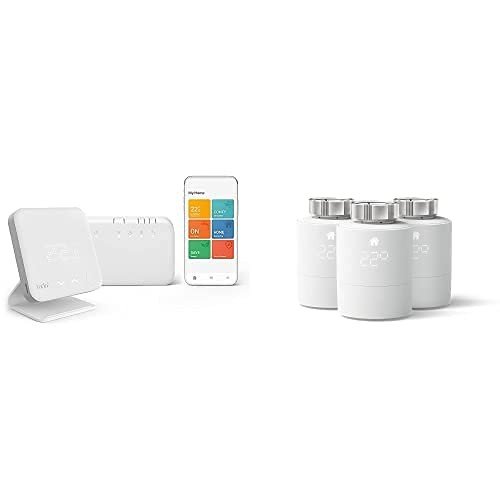Industrial Lamps in the UK: Illuminating Industries and Workspaces
In an era where effective lighting options play a pivotal function in boosting productivity and security in various industrial settings, industrial lamps have actually emerged as essential tools for factories, warehouses, workshops, and more. The UK's market for industrial lighting is rapidly developing, driven by developments in innovation, a growing concentrate on energy performance, and rigid safety guidelines. This short article checks out the various kinds of industrial lamps available in the UK, their applications, and the factors to consider that should be made when choosing the proper lighting solutions for industrial environments.
Understanding Industrial Lamps
Industrial lamps are designed specifically for use in a variety of industrial settings. They provide the required lighting while also considering the special challenges posed by such environments, consisting of dust, wetness, high ceilings, and variable temperature levels. Industrial lamps come in numerous forms, consisting of LED, fluorescent, and metal halide lighting, each with its own set of characteristics and advantages.
Kinds Of Industrial Lamps
LED Industrial Lamps:
- Description: LED (Light Emitting Diode) industrial lamps are energy-efficient, long-lasting, and provide outstanding lighting.
- Advantages:
- Energy performance (approximately 80% less energy usage)
- Long lifespan (approximately 50,000 hours)
- Low heat emission
- Instantaneous brightness with no flickering
- Applications: Factories, storage facilities, and building sites.
Fluorescent Industrial Lamps:
- Description: These lamps emit light through the excitation of gas, frequently used in environments requiring uniform lighting.
- Benefits:
- Good color rendering
- Affordable
- Different shapes and sizes
- Applications: Workshops, garages, and assembly lines.
Metal Halide Industrial Lamps:
- Description: This kind of gas discharge lamp produces a brilliant, white light and is often utilized in big areas.
- Benefits:
- High intensity and brightness
- Exceptional for sports venues, car park, and big industrial centers
- Applications: Warehouses, packing docks, and outdoor locations.
Comparison Table of Different Types of Industrial Lamps
| Lamp Type | Energy Efficiency | Life expectancy | Brightness | Application Areas |
|---|---|---|---|---|
| LED Industrial Lamps | Approximately 80% | Up to 50,000 hours | Really High | Factories, Construction Sites |
| Fluorescent | Moderate | 7,000 - 15,000 hours | Moderate to High | Workshops, Garages |
| Metal Halide | Moderate | 15,000-20,000 hours | High | Warehouses, Outdoor Areas |
Choosing Industrial Lamps
When picking industrial lamps, several elements should be considered. These include:
- Type of Application: Different areas have differing lighting needs. For example, high-precision jobs might require brighter, more concentrated lighting compared to basic work area lighting.
- Energy Efficiency: With rising energy expenses and ecological concerns, picking lamps with high energy efficiency can lead to significant cost savings with time.
- Lifespan: Longer-lasting lamps lower maintenance costs and downtime, making them more suitable in hectic industrial settings.
- Security Standards: Compliance with safety guidelines is vital. Industrial lamps need to be designed to endure severe conditions, including wetness, dust, and impacts.
- Expense: While upfront costs matter, the long-term savings accomplished by means of energy-efficient and lasting lamps should likewise be taken into account.
Advantages of Appropriate Industrial Lighting
- Improved Safety: Proper illumination minimizes the risk of mishaps and injuries in industrial environments.
- Increased Productivity: Adequate lighting promotes much better visibility, assisting in the efficiency of workers.
- Cost Savings: Energy-efficient lamps result in lower electrical power expenses and less regular replacements.
- Improved Quality Control: Good lighting permits much better assessment processes, ultimately improving item quality.
Frequently Asked Questions (FAQs)
Q1. How do I determine the best type of industrial lamp for my center?A1. Examine the particular lighting needs and conditions of your facility. Consider read as the jobs being carried out, the size of the space, and any regulatory requirements.
Q2. Are LED lights worth the investment in an industrial setting?A2. Yes, LED lights provide substantial long-term cost savings due to lower energy intake and longer lifespans, making them a cost-efficient choice in the long run.
Q3. Can I install industrial lamps myself?A3. While some individuals may have the skills to install lamps, it is often advised to employ a qualified electrical expert to make sure compliance with safety requirements and regional regulations.
Q4. What maintenance is needed for industrial lamps?A4. Regular inspections for damage, cleansing of lights, and prompt replacement of malfunctioning lamps are necessary to preserve optimal performance.
Q5. What are the latest trends in industrial lighting innovation?A5. Advances in smart lighting systems, including IoT (Internet of Things) combination and advanced energy management solutions, are at the forefront of industrial lighting development.
The best industrial lamps are critical to guaranteeing security, efficiency, and cost performance in various industrial settings. The UK market provides a series of lighting solutions, from LED lamps to fluorescent and metal halide options, each ideal for various applications. By comprehending the functions and benefits of these lighting types and taking crucial considerations into account, companies can make educated choices that will illuminate their work spaces effectively while enhancing performance and saving costs. Purchasing the right industrial lighting not just enhances overall atmosphere but likewise fosters a much safer and more efficient workplace.

